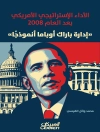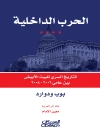To do science is to find patterns, and scientists are always looking for p- terns that they can use to structure their thinking about the world around them. Patterns are found in data, which is why science is inevitably a qu- titative study. But there is a difficulty in finding stable patterns in the data since many patterns are temporary phenomena that have occurred r- domly, and highly sophisticated empirical methods are necessary to dist- guish stable patterns from temporary or random patterns. When a scientist thinks he has found a stable pattern, he will generally try to capture that pattern in a model or theory. A theory is essentially a pattern, and thus theory is a central part of science. It would be nice to have a single pattern – a unified theory – that could serve as a map relating our understanding with the physical world around us. But the physical world has proven far too complicated for a single map, and instead we have had to develop smaller sub maps that relate to small areas of the physical world around us. This multiple theory approach presents the pr- lem of deciding not only what the appropriate map for the particular issue is, but also of handling the map overlays where different maps relate to overlapping areas of reality. It is not only science that is focused on finding patterns; so too are most individuals.
Inhaltsverzeichnis
General Issues.- Rationality, learning and complexity: from the Homo economicus to the Homo sapiens.- The Confused State of Complexity Economics: An Ontological Explanation.- Modeling Issues I: Modeling Economic Complexity.- The Complex Problem of Modeling Economic Complexity.- Visual Recurrence Analysis: Application to Economic Time series.- Complexity of Out-of-Equilibrium Play in Tax Evasion Game.- Modeling Issues II: Using Models from Physics to Understand Economic Phenomena.- A New Stochastic Framework for Macroeconomics: Some Illustrative Examples.- Probability of Traffic Violations and Risk of Crime: A Model of Economic Agent Behavior.- Markov Nets and the Net Lab Platform: Application to Continuous Double Auction.- Synchronization in Coupled and Free Chaotic Systems.- Agent Based Models.- Explaining Social and Economic Phenomena by Models with Low or Zero Cognition Agents.- Information and Cooperation in a Simulated Labor Market: A Computational Model for the Evolution of Workers and Firms.- Applications.- Income Inequality, Corruption, and the Non-Observed Economy: A Global Perspective.- Forecasting Inflation with Forecast Combinations: Using Neural Networks in Policy.- Policy Issues.- The Impossibility of an Effective Theory of Policy in a Complex Economy.- Implications of Scaling Laws for Policy-Makers.- Robust Control and Monetary Policy Delegation.












